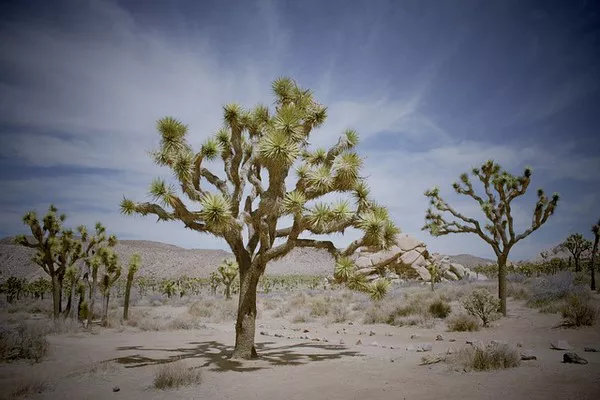Deserts, with their harsh climates and arid landscapes, might seem like barren wastelands devoid of life. However, contrary to popular belief, these environments are teeming with an array of fascinating plant species adapted to survive in extreme conditions. From succulents to drought-resistant shrubs, desert flora exhibit remarkable resilience and unique adaptations that allow them to thrive where many other plants would wither. In this article, we embark on a journey to explore the diverse world of desert plants, shedding light on their remarkable adaptations, ecological significance, and the role they play in sustaining fragile desert ecosystems.
Adaptations for Survival
Surviving in the desert requires plants to overcome significant challenges such as scorching temperatures, limited water availability, and nutrient-poor soils. To thrive in such conditions, desert plants have evolved an impressive array of adaptations:
1. Water Storage: Succulents, such as cacti and agaves, are renowned for their ability to store water in fleshy stems, leaves, or roots. These specialized tissues allow them to survive prolonged periods of drought by storing water during rare rainfall events and minimizing water loss through transpiration.
2. Reduced Leaves: Many desert plants have evolved reduced or modified leaves to minimize water loss through evaporation. Instead of traditional broad leaves, desert plants may have spines, needles, or small scales to reduce surface area and conserve water.
3. Deep Roots: To access water deep underground, desert plants often develop extensive root systems that can reach down to the water table or tap into shallow groundwater reserves. This allows them to withstand extended periods of drought by accessing water sources inaccessible to other plants.
4. CAM Photosynthesis: Crassulacean Acid Metabolism (CAM) is a specialized form of photosynthesis employed by many desert plants. Unlike traditional C3 or C4 photosynthesis, CAM plants open their stomata at night to reduce water loss through transpiration and fix carbon dioxide into organic acids, which are then converted into sugars during the day.
5. Heat Tolerance: Desert plants have evolved mechanisms to cope with extreme heat, including reflective surfaces to reduce solar radiation absorption, waxy coatings to prevent water loss, and mechanisms for dissipating excess heat through specialized tissues.
Common Desert Plant Species
1. Saguaro Cactus (Carnegiea gigantea): Iconic of the American Southwest, the saguaro cactus is a symbol of desert resilience. These towering cacti can reach heights of up to 40 feet and live for over 150 years. Their accordion-like pleats allow them to expand to store water during rare rainfall events, sustaining them through long periods of drought.
2. Mojave Yucca (Yucca schidigera): Found in the Mojave Desert of North America, the Mojave yucca is characterized by its striking rosette of stiff, sword-shaped leaves and towering flower stalks adorned with creamy white blooms. Native tribes traditionally used various parts of the yucca plant for food, fiber, and medicinal purposes.
3. Desert Ironwood (Olneya tesota): Endemic to the Sonoran Desert, the desert ironwood is a slow-growing, long-lived tree prized for its dense, durable wood and striking purple flowers. Despite its small stature, the desert ironwood plays a crucial role in providing habitat and food for a variety of desert wildlife.
4. Brittlebush (Encelia farinosa): A common sight in the deserts of the American Southwest, the brittlebush is a drought-tolerant shrub known for its bright yellow flowers and aromatic foliage. Its resinous sap has been used medicinally by indigenous peoples for centuries.
5. Barrel Cactus (Ferocactus spp.): Named for their barrel-like shape, barrel cacti are found throughout North and South American deserts. These globular cacti store water in their swollen stems and produce vividly colored flowers that attract pollinators such as bees and birds.
Ecological Importance
Desert plants play a crucial role in maintaining fragile desert ecosystems and supporting a diverse array of wildlife. Their deep root systems help stabilize soil, preventing erosion and desertification. Additionally, many desert plants provide food and shelter for desert-adapted animals, ranging from insects and reptiles to birds and mammals.
Furthermore, desert plants contribute to global carbon sequestration by photosynthesis and help mitigate the impacts of climate change by reducing greenhouse gas emissions and maintaining soil fertility. Their unique adaptations also offer valuable insights for biotechnological applications, such as developing drought-resistant crops or novel pharmaceutical compounds.
Conservation Challenges
Despite their resilience, desert plants face growing threats from human activities, including habitat destruction, overgrazing, climate change, and invasive species. As desert ecosystems become increasingly fragmented and degraded, many endemic plant species are at risk of extinction.
Conservation efforts aimed at protecting desert plants and their habitats are therefore crucial for maintaining biodiversity and ecosystem stability. This includes implementing sustainable land management practices, establishing protected areas, conducting research on desert plant ecology, and raising public awareness about the importance of desert conservation.
Conclusion
Desert plants are marvels of evolution, showcasing a remarkable array of adaptations that enable them to thrive in some of the harshest environments on Earth. From towering cacti to resilient shrubs, these plants play a vital role in sustaining fragile desert ecosystems and supporting a rich diversity of life.
As we continue to explore and appreciate the beauty and resilience of desert flora, it is essential to recognize the importance of conserving these unique ecosystems for future generations. By understanding and protecting desert plants, we can ensure that these remarkable species continue to inspire and enrich our world for years to come.


